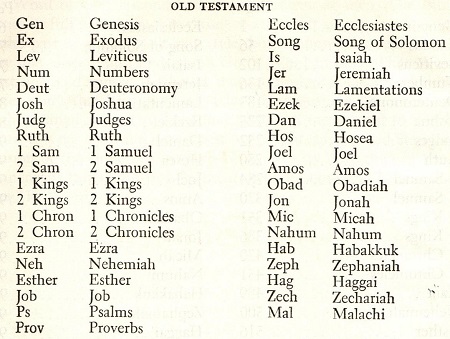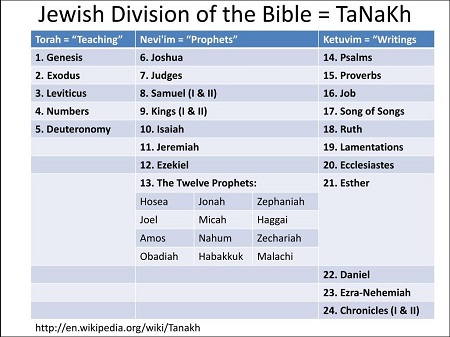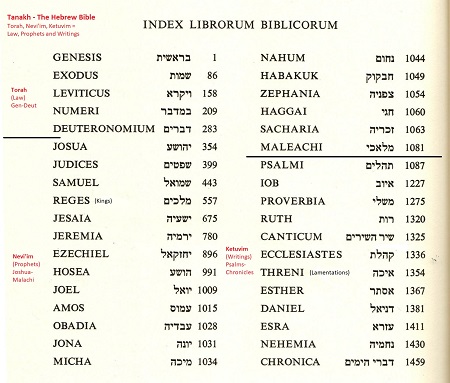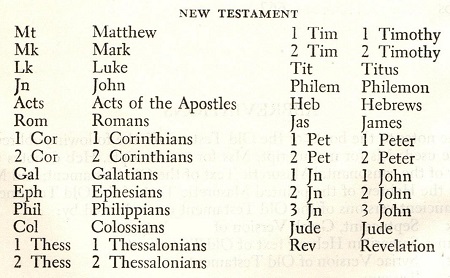Q. 41 Didn't Constantine tell the bishops what to put in the Bible? |
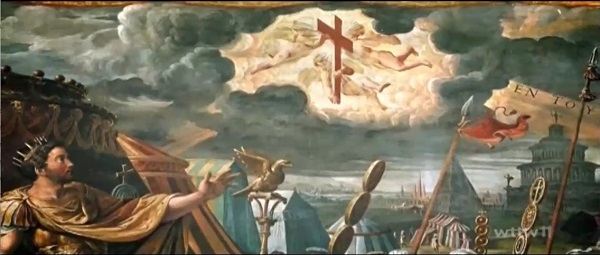 Painting - Constantine's Vision - "By this sign, you will conquer" G. Romano |
|
The 66 books of the Bible, 39 Old Testament books and 27 New Testament books, were not wantonly placed in the Bible by kings or bishops. Books included in the canon were done so because they were recognized to be from God using a process that contained a number of criteria, As the McDowells put it:
The Old Testament Canon The old testament canon was closed by the time of Jesus - or at latest shortly thereafter. Either way, long before Constantine. Dunbar, in an article on the canon writes, "It is evident that at least by the end of the first century A.D. the Jews understood that the biblical canon was closed.[3] The Old Testament canon consists of
the following books: Dunbar further explains:
Those twenty-four books correspond to the 39 books of our current
Bible as follows: The Old Testament canon was closed before the birth of Constantine, so Constantine had nothing to do with which books are recognized for the Old Testament. Let's move on to the New Testament. The New Testament Canon. The New Testament consists of the
following Books: The New Testament canon was also
closed before Constantine became emperor in the fourth century
(306-337). We have attestation of the recognition of all the books
of the new testament before the reign of Constantine: Origen (c.249) in his Hamiliae Josuam 7.1 lists all the New Testament books.[6] The Muratorian Fragment - Another early witness (c. end of second century) lists all the books except 1, 2 Peter, Hebrews, 3 John and James[7] So by the end of the third century - before Constantine comes into power - the canon of the new Testament is already recognized. So again Constantine had nothing to do with what was includedin in the canon of the new testament. So why do people think that he did? We need to review a little history to understand this. Church History - Immediately
Preceding Constantine.
So like Decius and Valerian before him, Diocletian set about persecuting Christians. Diocleatian elected to split his reign with another to have better control over the empire. Later, having already split the ruling authority, it's not too surprising that after his death there was a struggle for power to determine who would rule all of the Roman empire. There were a number of contenders, but the last two standing were Constantine in the West and Maxentius in the East. Constantine crossed the Alps to confront Maxentius in Rome at the Mulvian (aka Milvian) bridge. The night before the battle, Constantine had a vision in which he saw the first two letters in Christ - the Chi Rho with the words "By this sign you will conquer." Constantine, with a smaller army, abandoned his worship of the pagan god "Sol Invictus" - the "unconquered" sun god, and followed the Christian God, having his soldiers paint the ChiRho symbol on their shields. Against the odds and clearly with divine help, the "unconquered sun" god was conquered by the Christian God, and Constantine was victorious over Maxentius at the Mulvian Bridge. You can view an account of his vision and victory below: With Constantine now in control of the empire, and thankful to the Christian God, he stops the persecution of the church. As Walker put it, "The emperor had cast his lot with the minority cause of the Christians, and henceforth he regarded the Christian God as the protector of the empire and the sponsor of his own mission of reform and reconstruction."[10] But this did not turn Constantine
into some kind of clergyman who could dictate what the church
believed or what to put in the Bible. Indeed Walker indicates his
help for the Christians was fairly limited: What about the Nicene Creed?
Didn't Constantine order the bishops there? The council that occurred during Constantine's reign was the first ecumenical council of Nicaea in 325 AD. At that council, "Eusebius of Caesarea, the historian, suggested the adoption of the creed of his own church."[13] The creed Eusebius suggested, known as the "creed of Caesarea" while defining Jesus as God, did not deal explicitly with the error of Arius. So the council of Nicaea put forth a modified version, which is called "The creed of Nicaea" which is very similar to what we now have as the Nicene creed, but this first, early version ends with an anathema not included in accepted Nicene creed.
Thus in the one significant council
that happened during the reign of Constantine, it is clear he had
nothing to do with directing the bishops or deciding anything that
had to do with the faith or the canon. By the time of the other
councils, Constantine was out of the picture.
Duane Caldwell |
February 25, 2025 Notes: 1.
David G. Dunbar "The Biblical Canon" in Hermeneutics,
Authority, and Canon; D.A. Carson and John D. Woodbridge,
editors, Grand Rapids Michigan:Academie Books - Zondervan Publishing
House, 1986, p.300 2.
Josh McDowell and Sean McDowell, Evidence That Demands a Verdict
- Life-Changing Truth for a Skeptical World, Nashville,
TN:Thomas Nelson,2017, p.66 - GIB: Ref. From Norman Geisler
and William Nix, A General Introduction to the Bible, revised
and expanded edition, Chicago, IL: Moody Press, 1986, p. 210 3. David G.
Dunbar, "The Biblical Canon" in Hermeneutics, Authority, and
Canon, Grand Rapids, Michigan: Academie Books-Zondervan
Publishing House, 1986, p.304 4. Dunbar, "The
Biblical Canon" p.304 5. McDowell and
McDowell, Evidence, p. 72 6. McDowell
and McDowell, Evidence, p. 73 7. McDowell and
McDowell, Evidence, p. 73 8. Williston
Walker, et. al. A History of the Christian Church, New York:
Charles Scribner's Sons, 1918-1985, p. 122 9. Walker et. al.
A History, p.123 10. Walker et.
all, A History, p.125 11. Walker et.
all, A History, p.125 12. Henry Bettenson, ed. Documents of the Christian Church, New
York:Oxford University Press, 1963, p. 25 13. Bettenson,
Documents, p. 24 14. Henry R.
Percival, The Seven Ecumenical Councils, Grand Rapids: Wm. b.
Eerdmans Publishing Company, 2013, Kindle Ed., p.245 Image:
|
Rational Faith
